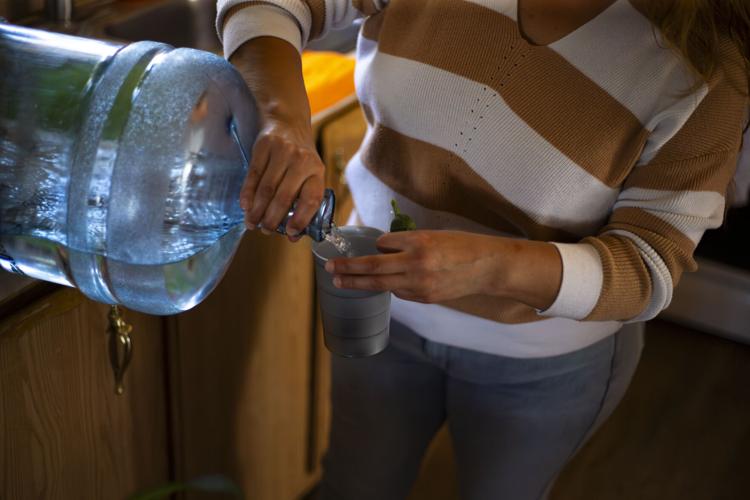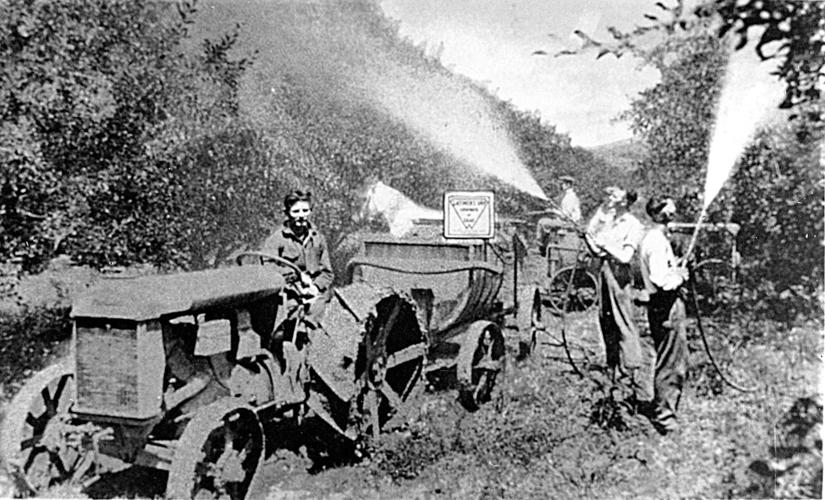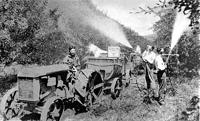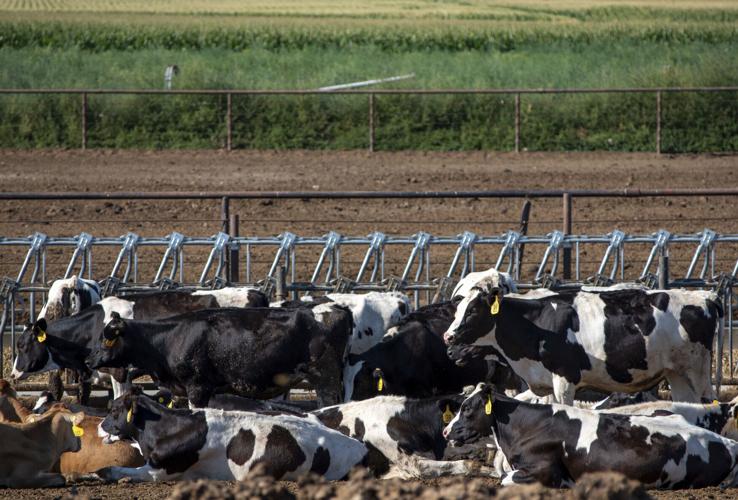Nearly three decades have passed since the rural Central Washington city of Quincy landed in the national spotlight over hazardous waste being recycled into fertilizer.
Though the practice was occurring nationwide, Quincy in Grant County became a root of concern when a small group of farmers and then-Mayor Patty Martin helped reveal what was happening.
Steel mills and other dirty industries were recycling their byproducts – heavy metals such as zinc, lead, arsenic and cadmium – into fertilizer. The unregulated practice was legal.
But the town was turned on end when news about the matter broke in a Seattle Times series published in 1997. State and federal authorities established standards, with regulations left up to individual states.
The issue serves as one example of how industry waste used in agriculture has stirred environmentalists and prompted lawsuits, more regulations and cleanup efforts.
“We continue to be concerned that waste taken from industry could cause serious contamination,” said Erika Schreder, science director of the environmental advocacy group Toxic Free Future. “We can’t always anticipate what chemicals will be present and highly problematic.”
Here in Yakima County, concerns over legacy pesticides in former orchard land and high levels of nitrates in groundwater have led to cleanup efforts and a safe drinking water program.
Legacy pesticides
Lead arsenate pesticides were widely used in apple and pear orchards across the country from the 1800s to about the 1950s, when farmers began using other products. The pesticides were used to fight infestations of codling moth caterpillars.
Health concerns over lead and arsenic exposure eventually led to the EPA banning lead arsenate pesticides in 1988. Those metals can remain in soil at toxic levels for decades.
In Central Washington alone, more than 100,000 acres of former orchard land contains varying levels of lead and arsenic contamination. Schools, parks, homes and other structures have been built on contaminated soil throughout the years.
In the early 2000s, efforts began here to clean up school and park sites, said Hector Casique, a project coordinator for the state Department of Ecology.

Orchard workers in Yakima spray apple trees with arsenate of lead.
So far, cleanup projects have been conducted at 29 schools statewide, including 10 in Yakima County, according to Ecology’s website.
Now the effort is shifting to residential developments, Casique said.
“Any land changed into residential, Ecology wants to check for lead and arsenic,” he said.
Ecology recently developed an online mapping system — Dirt Alert — where the public can look up contaminated land. The site is still being updated as soil sampling continues, Casique said.
Landowners and developers in addition to Ecology are able to sample soils and report the findings, which eventually will be loaded onto the map, he said.
“Eventually Dirt Alert mapping will be a one stop for all,” he said. “So down the road you’ll certainly be able to find all this information.”
A preliminary plat approval for development can trigger a soil sampling by Ecology, Casique said.
“Overall, we want to make sure people understand there is a contamination area and that there are things you can do to minimize exposure,” he said.
Contaminated dirt can be removed and replaced with clean soil or contaminated soil can be capped with a fabric material with clean soil, mulch or landscaping on top, he said.
Model remedies for contaminated soil are available on Ecology’s website.
Yakima County Public Services Director Lisa Freund said most of the Valley consists of former orchard land and worries the new regulations will skyrocket development costs.
“We are hearing from developers; they are not happy,” she said.
Freund said the regulations could slow development moving forward because there’s no place in the county at this time to dispose of contaminated soil and finding clean replacement soil also will be a challenge.
“We need a clean soil bank and a place to put contaminated soil,” she said. “It’s kind of leaving developers between a rock and a hard place.”
Nitrates
A federal lawsuit against a handful of large Lower Valley dairy farmers grabbed the attention of county officials after an EPA study linked those dairies to nitrate contamination in nearby domestic wells.
Nitrates naturally occur in soil but can be drastically elevated by animal waste, heavy fertilizer applications and leaky septic tanks.
High levels of nitrates can be harmful to infants, pregnant women and the elderly, according to the Centers for Disease Control and Prevention.
There have been no reported health impacts in Yakima County related to nitrates, said Damon Roberts, Ecology’s water quality section manager.

Dozens of cows bask under the afternoon sun outside of Mabton, Wash., on Tuesday, Aug 8., 2023.
Large dairies have storage ponds in which cow manure is kept until it's spread on fields as fertilizer. Environmental groups accused the dairies of mishandling animal waste and that it was seeping into the groundwater as a result.
In 2013, those dairies entered a consent decree with the EPA that was separate from the lawsuit but called for improved handing on nitrates, a byproduct of animal waste, and routine groundwater monitoring.
Two years later, a federal judge approved a separate consent decree requiring the dairies to install protective liners in manure storage ponds and provide bottled water to affected residents.
That prompted the county to form the Ground Water Management Area (GWMA), which includes state, federal and tribal authorities as well as dairymen and farmers. The GWMA spans a swath of the Lower Valley from below Union Gap along the east side of the Yakima River to below Grandview.
The group spent several years devising a plan to begin reducing nitrates in groundwater in addition to providing impacted residents with bottled water and filtration devices for their homes.
Dairies aren’t the only source of high nitrates in groundwater. Irrigated agriculture land as well as leaky septic tanks are the other two leading causes, Roberts said.
Yakima County has taken the lead on a project to continue testing and monitoring drinking water as well as providing affected residents with filtration devices, he said.
The state recently provided a $800,000 grant to continue that work, Roberts said.
So far, about 255 households have been identified with nitrate levels above the safe threshold, which is 10 milligrams per liter, he said.
Public Services Director Freund said high nitrates appear to be impacting shallow wells, ones 250 feet deep or less.
“Long-term what we want is people on public systems or deeper wells,” she said.
Roberts said community outreach and workshops will ramp up this spring to inform residents in affected areas.
“That’s what we’re intending to do,” he said. “Inform the public how to get testing, what are safe levels and what to do if not.”
Editor's note: An aerial image of agricultural land in the Lower Yakima Valley that was originally attached to this story has been removed because it didn't accurately show the GWMA. It has been replaced with a map.
• The Return to Quincy project is funded by TomKat Media, a film, television and media company founded by Tom Steyer and Kat Taylor to inspire creativity for the common good. Yakima Herald-Republic editors and reporters operate independently of our funders and maintain full editorial control over all project coverage.

















(0) comments
Comments are now closed on this article.
Comments can only be made on article within the first 3 days of publication.